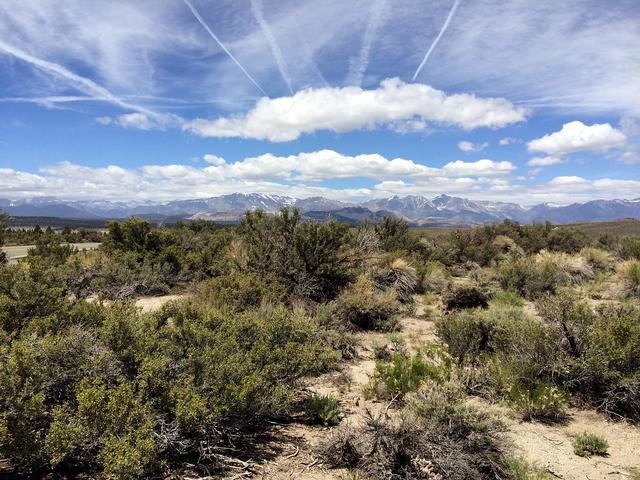Training and competing in the heat
Posted August 05, 2015 11:55AM by
CPTips in the
Running Forum
Posting this article in the Running Forum, but it's equally applicable to any endurance sport in the summer, especially cycling.
I recently had a personal encounter with the effects of riding without adequate acclimatization to the heat. I train in the Pacific Northwest (Seattle) but was riding in the Sierras in California. On day 2 of a multi-day ride I had my first cramps (ever) while on the bike. Quad cramps that almost kept me from finishing. It was 95 F, we were climbing Emigrant Pass (8000 feet), my gloves were white with salt, and I'm sure I was not drinking enough. Fortunately they had electrolyte powder at the next rest stop, and I took 10 minutes to drink a couple of water bottles or rehydration fluid. And I slowed down.
Lesson learned. As I read this newly published article, it definitely resonated. I'll quote a few pertinent sentences. (The URL follows for those that would like the full text with some training parameters).
Points to Remember:
Only training in the heat will do the trick. "Although regular exercise in temperate conditions elicits partial heat acclimatization, it cannot replace the benefits induced by consecutive days of training in the heat."
It will take 1 to 2 weeks for maximum acclimatization. "Most adaptations (ie, decreases in heart rate, skin and rectal temperature, increases in sweat rate and work capacity) develop within the first week of heat acclimatization and more slowly in the subsequent 2 weeks.... [even trained athletes] may require 6–10 days to achieve near complete cardiovascular and as much as 2 weeks to optimize aerobic performance (ie, cycling time trial) in hot ambient conditions."
Hot and humid is more stressful than hot and arid. "Although scientific support for this practice is still lacking, it may potentially be beneficial for athletes to train in humid heat at the end of their acclimatization sessions to dry heat to further stress the cardiovascular and thermoregulatory systems.
If you are going to a hot climate, it may be time to move the trainer into the sauna. "Athletes who do not have the possibility to travel to naturally hot ambient conditions (so-called ‘acclimatization’) can train in an artificially hot indoor environment (so-called ‘acclimation’)."
And finally, hydration is essential. Even though I have quoted a few studies that suggest hydration is too highly stressed, if you are not hydrated, and are not sweating, the effects of heat are multiplied. And you need to take salt (electrolytes) as well as plain water.
British Journal of Sports Medicine: Consensus recommendations on training and competing in the heat
I recently had a personal encounter with the effects of riding without adequate acclimatization to the heat. I train in the Pacific Northwest (Seattle) but was riding in the Sierras in California. On day 2 of a multi-day ride I had my first cramps (ever) while on the bike. Quad cramps that almost kept me from finishing. It was 95 F, we were climbing Emigrant Pass (8000 feet), my gloves were white with salt, and I'm sure I was not drinking enough. Fortunately they had electrolyte powder at the next rest stop, and I took 10 minutes to drink a couple of water bottles or rehydration fluid. And I slowed down.
Lesson learned. As I read this newly published article, it definitely resonated. I'll quote a few pertinent sentences. (The URL follows for those that would like the full text with some training parameters).
Points to Remember:
Only training in the heat will do the trick. "Although regular exercise in temperate conditions elicits partial heat acclimatization, it cannot replace the benefits induced by consecutive days of training in the heat."
It will take 1 to 2 weeks for maximum acclimatization. "Most adaptations (ie, decreases in heart rate, skin and rectal temperature, increases in sweat rate and work capacity) develop within the first week of heat acclimatization and more slowly in the subsequent 2 weeks.... [even trained athletes] may require 6–10 days to achieve near complete cardiovascular and as much as 2 weeks to optimize aerobic performance (ie, cycling time trial) in hot ambient conditions."
Hot and humid is more stressful than hot and arid. "Although scientific support for this practice is still lacking, it may potentially be beneficial for athletes to train in humid heat at the end of their acclimatization sessions to dry heat to further stress the cardiovascular and thermoregulatory systems.
If you are going to a hot climate, it may be time to move the trainer into the sauna. "Athletes who do not have the possibility to travel to naturally hot ambient conditions (so-called ‘acclimatization’) can train in an artificially hot indoor environment (so-called ‘acclimation’)."
And finally, hydration is essential. Even though I have quoted a few studies that suggest hydration is too highly stressed, if you are not hydrated, and are not sweating, the effects of heat are multiplied. And you need to take salt (electrolytes) as well as plain water.
- Before training and competition in the heat, athletes should drink 6 mL of fluid per kg of body mass every 2–3 h, in order to start exercise hydrated.
- Athletes training in the heat have higher daily sodium (ie, salt) requirements than the general population. Sodium supplementation might also be required during exercise.
- For competitions lasting several days (eg, cycling stage race, tennis/team sports tournament), simple monitoring techniques such as daily morning body mass and urine specific gravity can provide useful insights into the hydration state of the athlete.
- Adequately rehydrating after exercise-heat stress by providing plenty of fluids with meals is essential. If aggressive and rapid replenishment is needed, then consuming fluids and electrolytes to offset 100–150% of body mass losses will allow for adequate rehydration.
- Recovery hydration regimens should include sodium, carbohydrates and protein.
British Journal of Sports Medicine: Consensus recommendations on training and competing in the heat
Hey thanks Richard R for sharing such an informative article.


